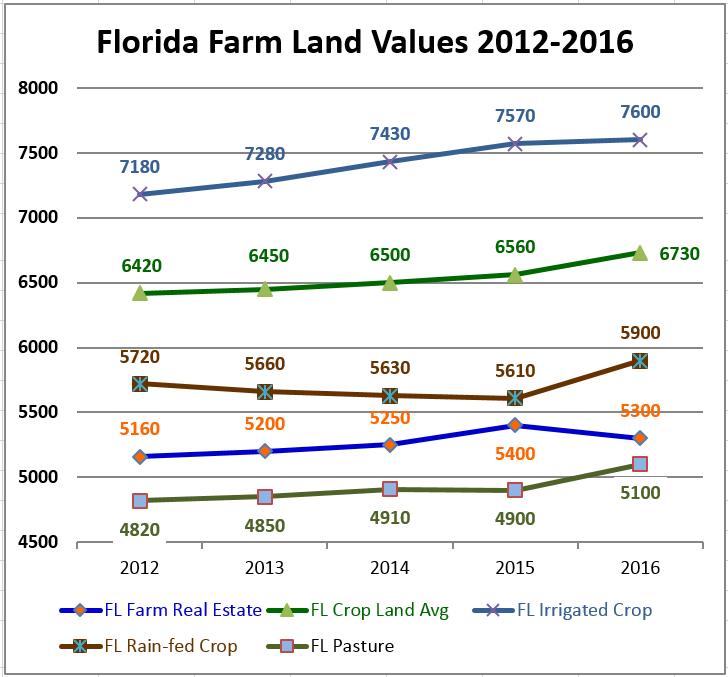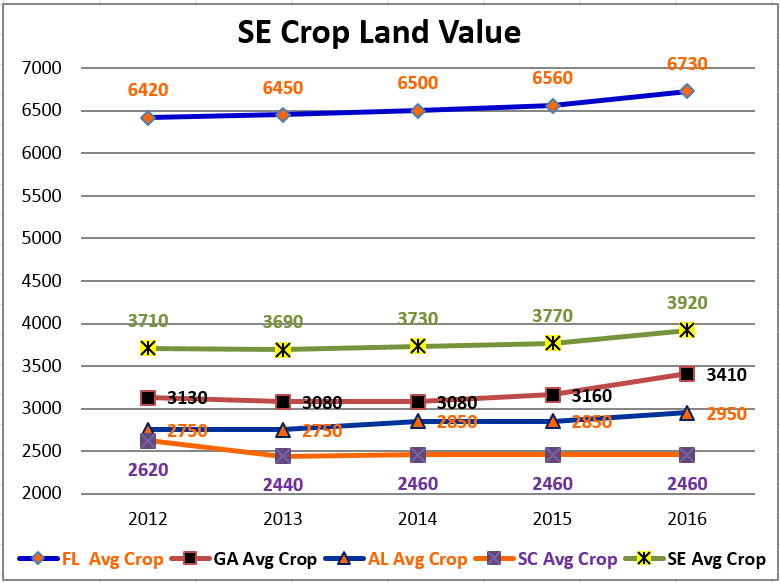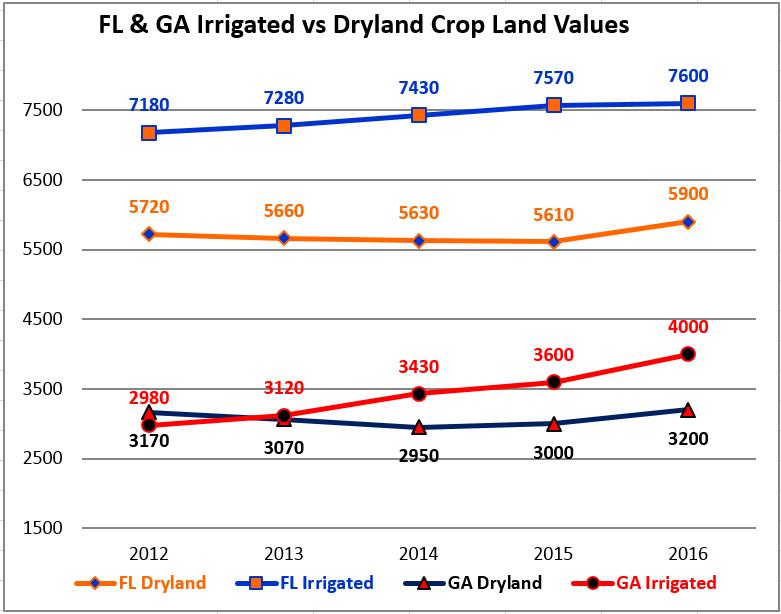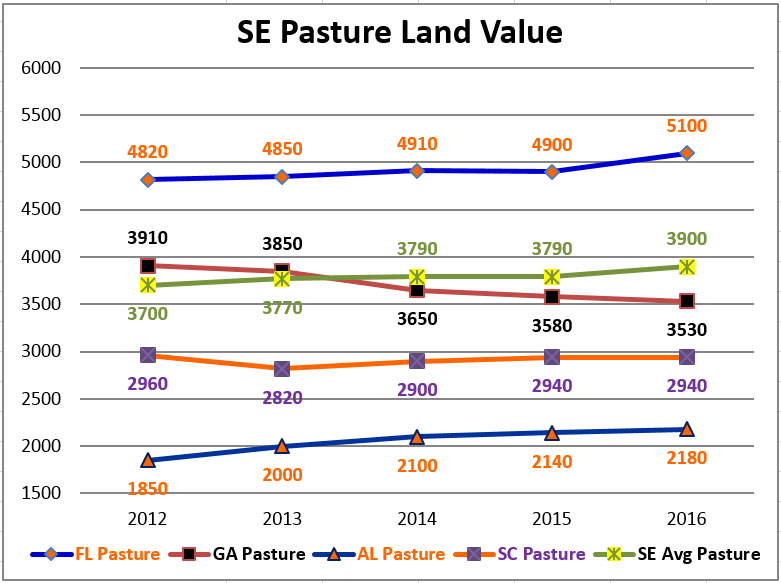By Doug Mayo

The last few years most of the farm market news has been pretty discouraging, with declining market prices for peanuts, cotton, corn, soybeans, and cattle. In August, however, USDA released the 2016 Land Values Summary report that showed that the value of farmland has held fairly strong, despite depressed commodity prices. Ultimately, increases in land value over time is only acquired when farmland is actually sold, but it also impacts the equity of the entire farm and the ability to secure loans as collateral. In really tough years, parcels can also be sold off to hold on to the majority of the farm. While land sales are not something farmers and ranchers participate in on a regular basis, it is good to know that this most valuable farm asset has not lost considerable value, even though the farm economy has been in serious decline the last three years.
National Highlights from the USDA Report:
- The United States farm real estate value, a measurement of the value of all land and buildings on farms, averaged $3,010 per acre for 2016, down $10 per acre (0.3 percent) from 2015 values. Regional changes in the average value of farm real estate ranged from a 3.3 percent increase in the Pacific region to 4.3 percent decrease in the Northern Plains region. The highest farm real estate values were in the Corn Belt region at $6,290 per acre. The Mountain region had the lowest farm real estate value at $1,110 per acre.
- The United States cropland value decreased by $40 per acre (1.0 percent) to $4,090 per acre from the previous year. In the Southeast region, the average cropland value increased 4.0 percent from the previous year. However, in the Northern Plains region, cropland values decreased by 5.4 percent.
- The United States pasture value remained constant at $1,330 per acre. The Delta region had the highest increase of 3.9 percent from 2015. The Northeast region had the highest decrease in pasture land at 2.6 percent.
2016 Florida Farmland Value Summary

Florida farmland values have held fairly steady over the past four years. According to USDA’s estimates, only the Real Estate Value (value of all land and buildings) of Florida farmland declined in 2016, down $100/acre from 2015. Crop and pasture land actually increased slightly in value over the past year. Average crop land value increased $70 per acre, and pasture land $200 per acre.
Southeastern States Summary
There is considerable variation between land values in Florida, Georgia, South Carolina and Alabama. Clearly proximity to larger urban areas, demand for development, and the types of crops grown in the four states influences land prices. This report does not break down land values into regions of each state, so the value of land in the Florida Panhandle land might more closely resemble the average for the Southeast.
Average Crop Land Value Estimates

The definition used to classify cropland includes field crops, vegetables, CRP, and hay production. Certainly the percentage of citrus, vegetable, and sugarcane land in Florida skews the value some as compared to the other states.
Irrigated Crop Land Value Estimates

In the USDA report, crop land values for many states are averaged, but for states such as Florida and Georgia, with a higher percentage of irrigated acres, they provided separate land values for both irrigated and dryland or rain-fed crop land.
Pasture Land Value Estimates

Pasture land values are much more similar across the southeast, but are still significantly higher in Florida, likely due to the higher demand for development. Interestingly, USDA estimates the value of Georgia pasture has declined over the past five years, while the other states have had a slight increase in value. Pasture land value in the Florida Panhandle would probably more closely resemble the average for the Southeast.
Source:ufl.edu